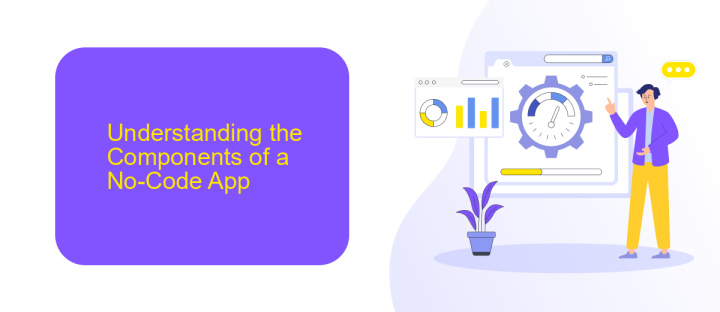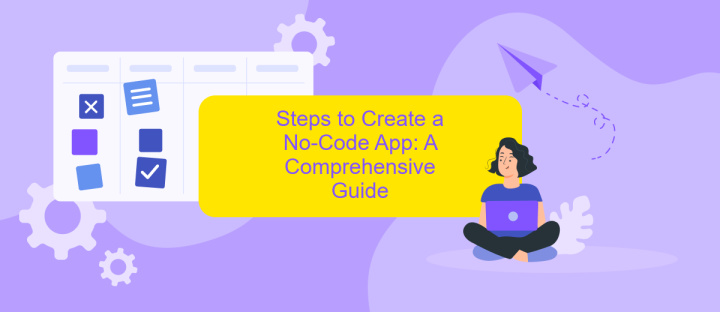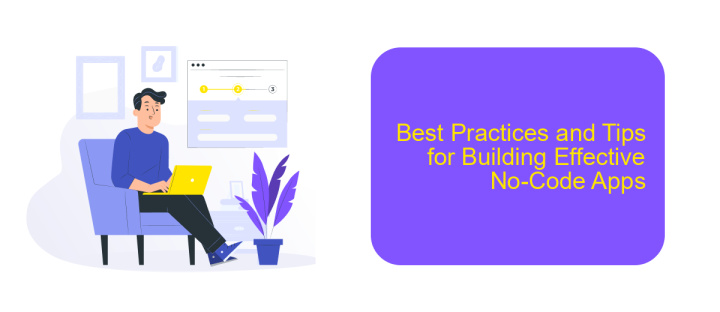Create No-Code App
Creating a no-code app has never been easier, thanks to the rise of intuitive platforms that empower individuals without programming skills. Whether you're a business owner looking to streamline operations or a creative mind with a groundbreaking idea, no-code tools provide the flexibility and accessibility needed to bring your vision to life. Discover how you can build powerful applications with minimal technical expertise.
Introduction: Defining No-Code Apps and Their Benefits
No-code apps are software applications built without traditional programming. They enable users to create functional programs through intuitive visual interfaces. This approach democratizes software development, allowing individuals without coding skills to bring their ideas to life.
- Ease of Use: No-code platforms are designed to be user-friendly, making app development accessible to non-developers.
- Cost-Effective: By eliminating the need for professional developers, no-code solutions reduce the cost of app creation.
- Speed: These platforms significantly speed up the development process, enabling rapid prototyping and deployment.
- Flexibility: Users can easily modify and update their apps without extensive rework.
- Integration: Services like ApiX-Drive facilitate seamless integration with various third-party tools and systems, enhancing app functionality.
The rise of no-code apps is transforming the tech landscape by empowering a broader range of people to develop software solutions. Whether for personal projects or business needs, no-code platforms provide a versatile and efficient way to turn ideas into reality.
Understanding the Components of a No-Code App

No-code apps are built using platforms that allow users to create applications through graphical user interfaces and configuration instead of traditional programming. The primary components of a no-code app include the visual editor, pre-built templates, and drag-and-drop functionality. These features enable users to design the app's interface, define workflows, and manage data without writing a single line of code. Additionally, no-code platforms often come with built-in tools for testing and deploying applications, making the entire development process more accessible and efficient.
Another crucial component is the integration capabilities. No-code platforms typically offer a variety of pre-built integrations with popular services and APIs, enabling seamless data exchange between different systems. For instance, ApiX-Drive is a service that facilitates easy integration by allowing users to connect their no-code apps with various third-party applications. This eliminates the need for manual data entry and ensures that your app can communicate effectively with other tools you use. With these components, creating a fully functional and integrated no-code app becomes a straightforward and streamlined process.
Steps to Create a No-Code App: A Comprehensive Guide

Creating a no-code app is an efficient way to bring your ideas to life without extensive programming knowledge. By following these steps, you can build a functional app quickly and easily.
- Define Your App's Purpose: Clearly outline what you want your app to achieve and who your target audience is.
- Choose a No-Code Platform: Select a no-code development platform that suits your needs, such as Bubble, Adalo, or Glide.
- Design the User Interface: Use the platform's drag-and-drop tools to design an intuitive and visually appealing interface.
- Set Up Data Management: Organize how your app will handle data, including databases and user inputs.
- Integrate Third-Party Services: Use tools like ApiX-Drive to connect your app with other services for enhanced functionality.
- Test Your App: Thoroughly test your app to identify and fix any issues before launch.
- Launch and Iterate: Publish your app and gather user feedback to make continuous improvements.
Following these steps will help you create a no-code app efficiently. By leveraging platforms and tools like ApiX-Drive, you can integrate various services seamlessly, ensuring your app is both functional and user-friendly.
Best Practices and Tips for Building Effective No-Code Apps

When building a no-code app, it's essential to start with a clear understanding of your goals and target audience. This will guide your design and functionality decisions, ensuring the app meets user needs effectively. Begin by sketching out the app's flow and features on paper or using digital tools.
Next, choose the right no-code platform that aligns with your project requirements. Each platform offers unique features, so it's crucial to select one that supports your app’s specific functionalities. Consider factors such as ease of use, scalability, and available integrations.
- Keep the user interface simple and intuitive.
- Test your app thoroughly before launch.
- Utilize integrations to enhance functionality, such as ApiX-Drive for seamless API connections.
- Gather user feedback and iterate based on their suggestions.
Finally, ensure your app is secure and data privacy is maintained. Regularly update your app to fix bugs and add new features. By following these best practices, you can create a no-code app that is both effective and user-friendly.


Conclusion: The Power and Potential of No-Code App Development
No-code app development has revolutionized the way individuals and businesses approach software creation. By eliminating the need for extensive coding knowledge, it empowers a broader audience to bring their innovative ideas to life. This democratization of app development fosters creativity, accelerates project timelines, and reduces costs, making it an invaluable tool for startups, small businesses, and even larger enterprises looking to streamline their processes.
Furthermore, the integration capabilities of no-code platforms, such as those offered by ApiX-Drive, enhance the functionality and connectivity of these applications. ApiX-Drive simplifies the integration of various services and APIs, allowing users to create seamless workflows and automate tasks without writing a single line of code. As no-code technology continues to evolve, its potential to transform industries and democratize app development will only grow, paving the way for a future where anyone can become a creator and innovator in the digital space.
FAQ
What is a no-code app?
Can I integrate third-party services with my no-code app?
Do I need any programming skills to create a no-code app?
How scalable are no-code apps?
Can no-code apps be used for enterprise-level solutions?
Time is the most valuable resource in today's business realities. By eliminating the routine from work processes, you will get more opportunities to implement the most daring plans and ideas. Choose – you can continue to waste time, money and nerves on inefficient solutions, or you can use ApiX-Drive, automating work processes and achieving results with minimal investment of money, effort and human resources.

